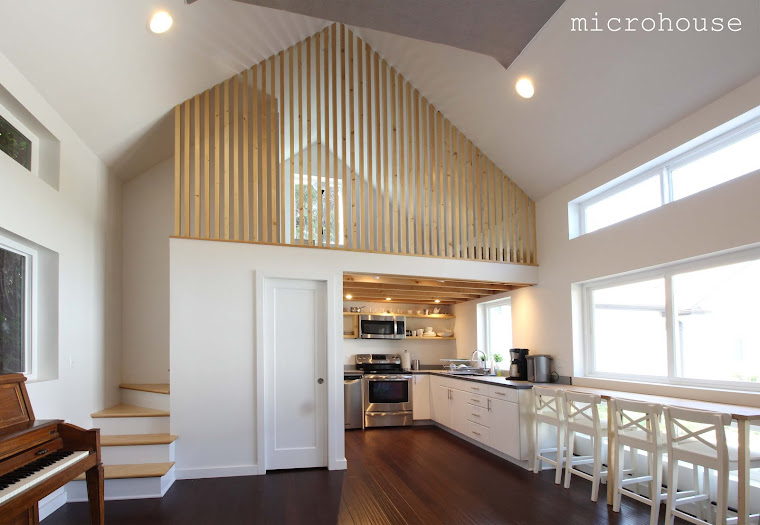Downturns
in the economy usually coincide with an increase the number of multigenerational
households. But what's going on now is more than a recessionary blip. The
fraction of the U.S. population 75 or older has increased from 5.2% in 1990 to
6.4% today. At the same time, the percentage of those 75 and up living in their
adult children's homes has been climbing too, from 4.1% in 1990 to 6.5% today,
reports Kelly Balistreri, associate director of the National Center for
Marriage Research at Bowling Green State University.
 |
| Schematic Design Phase - Wallingford Cottage |
There
are many financial aspects affecting the number of those living in
multi-generational households. These
include the increasing costs of health care, in-home care, and child care. While those living in multi-generational
households will attest to the added challenges there are innumerable benefits
that go well beyond financial gain.
Three generations of Mary K's family live in the Wallingford
neighborhood of Seattle. She now lives a number of hours drive away but
hopes to move closer to her new great granddaughter. How much closer?
Into her daughter's back yard. Seattle's recently expanded backyard
cottage ordinance allows her to do just that. Seattle and many other
cities allow backyard cottages, detached accessory dwelling units, to share a
lot with an existing primary residence. Mary K plans to build a tiny backyard cottage
that will give her a comfortable place to live where she can be a more
prominent part of her family’s life. Her
new kitchen window will look out on a shared garden and her cottage will
feature a loft for her great granddaughter to play in. She looks forward to taking her great granddaughter
to the nearby woodland park zoo.
No doubt Mary K’s family will appreciate the extra help as well. Raising a child is expensive in no small part
due to the cost of child care. Many
parents scramble to keep up a juggling act of work and child care schedules
that result in children being raised by caregivers outside the family. In this
day and age it seems the lucky exceptions that have family close enough to help
out on a regular basis.
Her backyard cottage will have another benefit as well. Mary K will pay to construct the cottage from
her savings. It will be her home but
will also be an asset for her daughter’s property. When she no longer lives in the cottage it
will become a source of rental income for the family, or perhaps her great
granddaughter’s college apartment.
Mary K’s cottage is schedule to begin construction in the early spring.


